Man and mouse cells are treated with red and green fluorescent dyes separately and are made to fuse. The resultant cell ls when kept at 37∘C, the distribution of dye on the surface of cell will be
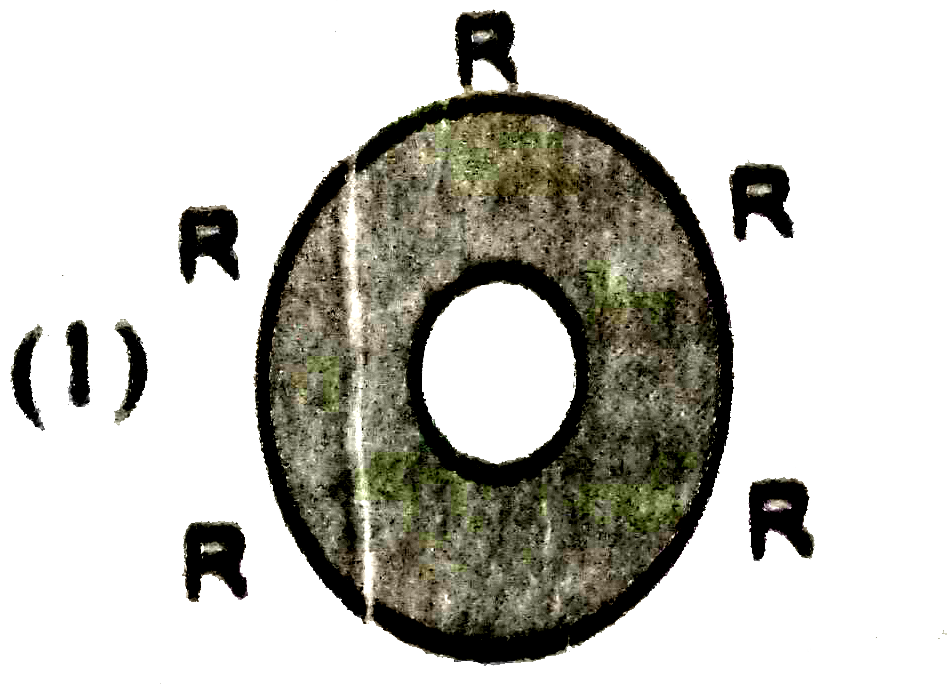
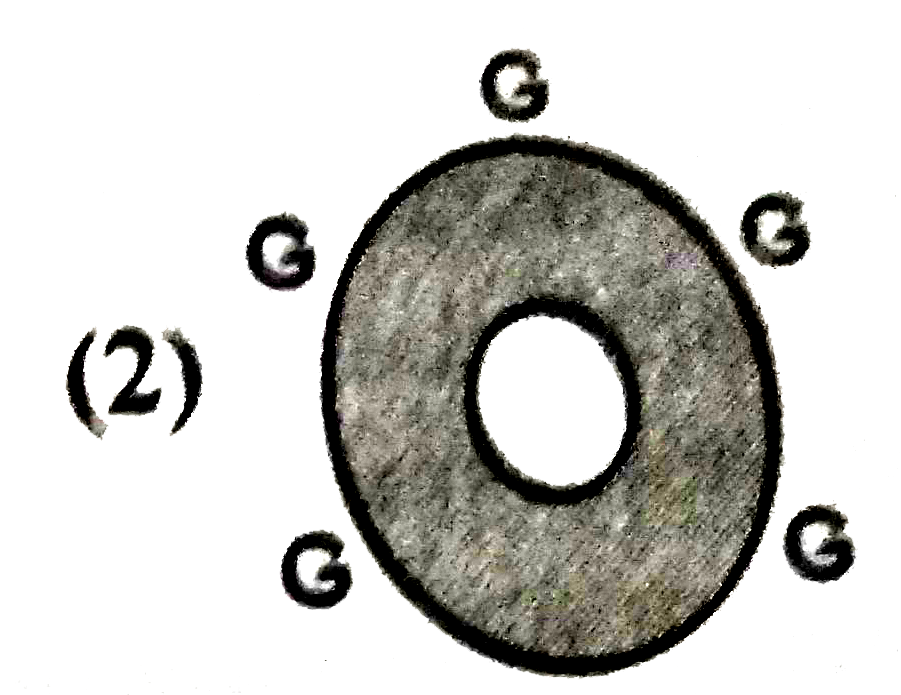

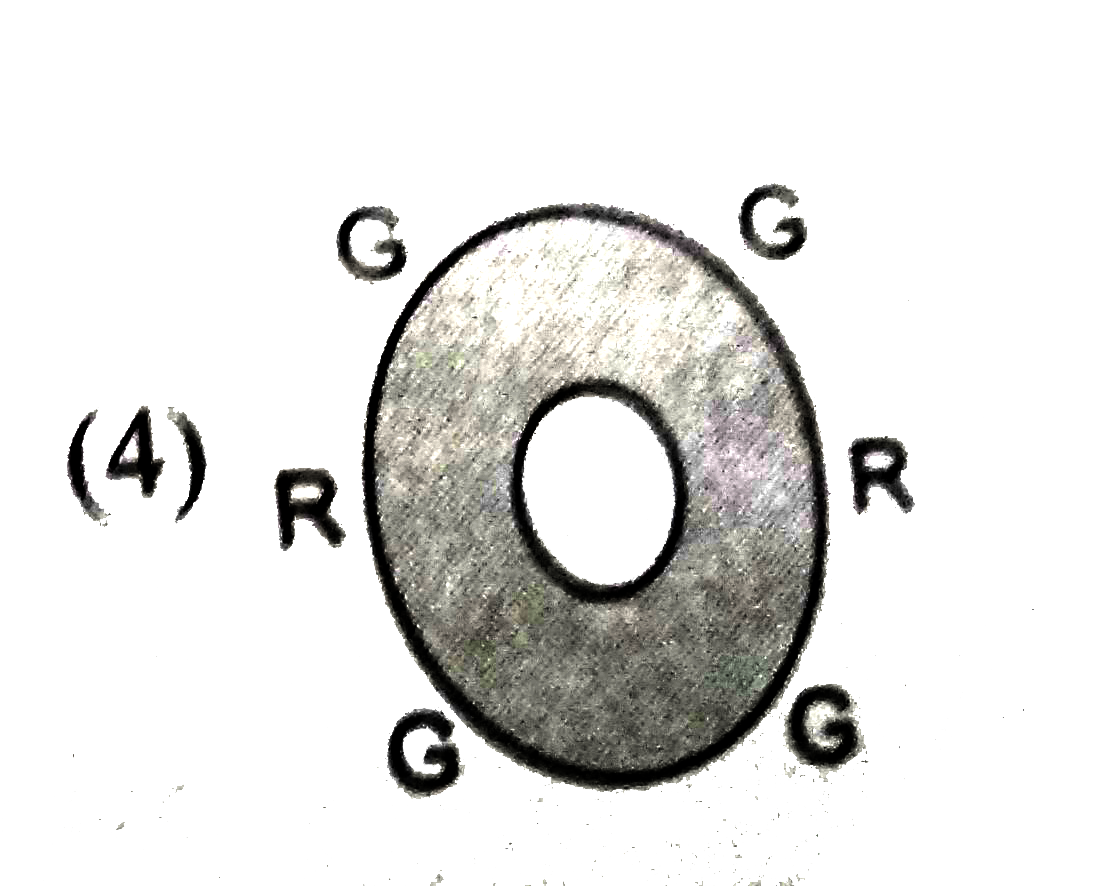
The correct Answer is:D
To solve the question regarding the distribution of fluorescent dyes on the surface of a fused cell from man and mouse cells, we can follow these steps:
1. Understanding the Experiment:
- Man and mouse cells are treated with red and green fluorescent dyes, respectively. After treatment, these cells are fused together.
2. Temperature Consideration:
- The resultant fused cell is kept at 37°C, which is the physiological temperature for mammalian cells. This temperature allows for normal cellular functions, including the movement of proteins within the cell membrane.
3. Fluorescence Recovery After Photobleaching (FRAP):
- The technique used to analyze the distribution of the dyes is called FRAP. In this technique, the fluorescent dyes are bleached using a laser, and the recovery of fluorescence is observed over time. This helps in studying the mobility of the membrane proteins.
4. Initial Distribution of Dyes:
- Right after fusion, the red and green dyes would initially be segregated, with red on one side (man cells) and green on the other (mouse cells).
5. Diffusion of Dyes:
- After the fusion and exposure to 37°C, the proteins (and thus the dyes) will start to diffuse laterally within the membrane. This diffusion is due to the fluid mosaic model of the cell membrane, where proteins can move freely within the lipid bilayer.
6. Expected Pattern of Distribution:
- As the dyes diffuse, they will mix together. The expected pattern after sufficient time would be an alternating arrangement of red and green dyes due to their lateral diffusion. This would result in a pattern like red-green-red-green on the surface of the cell.
7. Choosing the Correct Answer:
- Based on the above understanding, the correct answer would be the one that depicts this alternating pattern of red and green fluorescence.
Conclusion:
The distribution of the dye on the surface of the fused cell at 37°C will be in an alternating pattern of red and green (red-green-red-green). Therefore, the correct answer is option D.
---
- Man and mouse cells are treated with red and green fluorescent dyes, respectively. After treatment, these cells are fused together.
- The resultant fused cell is kept at 37°C, which is the physiological temperature for mammalian cells. This temperature allows for normal cellular functions, including the movement of proteins within the cell membrane.
- The technique used to analyze the distribution of the dyes is called FRAP. In this technique, the fluorescent dyes are bleached using a laser, and the recovery of fluorescence is observed over time. This helps in studying the mobility of the membrane proteins.
- Right after fusion, the red and green dyes would initially be segregated, with red on one side (man cells) and green on the other (mouse cells).
- After the fusion and exposure to 37°C, the proteins (and thus the dyes) will start to diffuse laterally within the membrane. This diffusion is due to the fluid mosaic model of the cell membrane, where proteins can move freely within the lipid bilayer.
- As the dyes diffuse, they will mix together. The expected pattern after sufficient time would be an alternating arrangement of red and green dyes due to their lateral diffusion. This would result in a pattern like red-green-red-green on the surface of the cell.
- Based on the above understanding, the correct answer would be the one that depicts this alternating pattern of red and green fluorescence.
The distribution of the dye on the surface of the fused cell at 37°C will be in an alternating pattern of red and green (red-green-red-green). Therefore, the correct answer is option D.
Topper's Solved these Questions
- CELL: STRUCTURE AND FUNCTIONSBOOK - CENGAGE BIOLOGY ENGLISHCHAPTER - CELL: STRUCTURE AND FUNCTIONSEXERCISE - ARCHIVES
50 Videos
- CELL CYCLE AND CELL DIVISIONBOOK - CENGAGE BIOLOGY ENGLISHCHAPTER - CELL CYCLE AND CELL DIVISIONEXERCISE - ARCHIVES (Chose the corrct option):
21 Videos
- CHEMICAL COORDINATION AND INTEGRATIONBOOK - CENGAGE BIOLOGY ENGLISHCHAPTER - CHEMICAL COORDINATION AND INTEGRATIONEXERCISE - ARCHIVES
26 Videos
Similar Questions
Cell organelle getting stained with redox dye Janus Green is
View SolutionWhich statement (s) is/are not true for the five-kingdom classification proposed by R.H. Whittaker (1969)?
(a) The main criteria for classification include cell structure, thallus organization, mode of nutrition, reproductions, and phylogenetic relationship.
(b) All prokaryotic organisms such as bacteria, blue-green algae, and ferns are grouped together under kingdom monera.
(c) Chlamydomonas, chlorella, and spirogyra are placed in Algae within plants due to the presence of the cell wall.
(d) Fungi are placed in a separate kingdom: Kingdom fungi.
(e) Paramecium and Amoeba are placed in the animal kingdom due to lack of cell wall.
View Solution
Knowledge Check
A scientist was studying the production of a protein that was released by an animal cell into a culture medium, she found that the protein only appeared in the culture medium after the added a few drops of a hormone to the cell. Before adding the hormone, she labelled the protein inside the cell with a fluorescent dye and looked at the cell under the lgiht microscope. The dye was seen in flattened sheets and tube. like structures throughout the cell, and in stacks of flattened sac-like structures. after adding the hormone, the dye was aslo seen as small dots clustered against the cell membrane, Which statement most likely explains these observations?
AThe hormone stimulates protein synthesis in the cell vacuole, the protein is then passed to the Golgi apparatus, and eventually passess through the cell membrane by passive diffusion.BThe hormone triggers the synthesis of the protein in the endoplasmic reticulum and it is then secreted outside of the cell via channel proteins in the cell membraneCThe protein is made in the endoplasmic reticulum, is passed to the Golgi appartus and is secreted through hormone-stimulated exocytosis.DThe protein is made in the Golgi apparatus, is passed to the endoplasmic recticulum and is secreted through hormone-stimulated pinocytosis.A red blood corpuscle (RBC) was kept in a solution and treated so that it became inside-out. What will be the polarity of the phospholipid bilayer in this cell ?
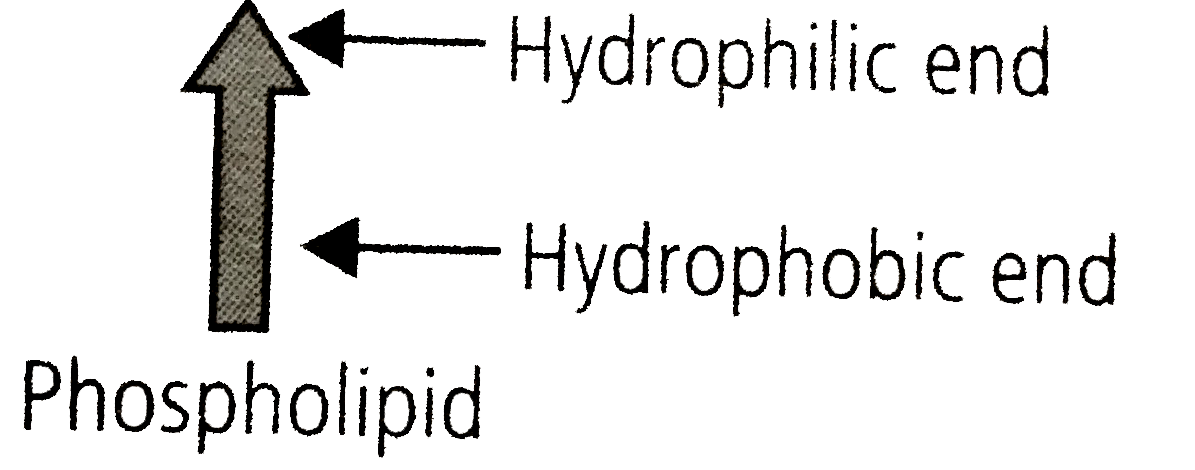 A
A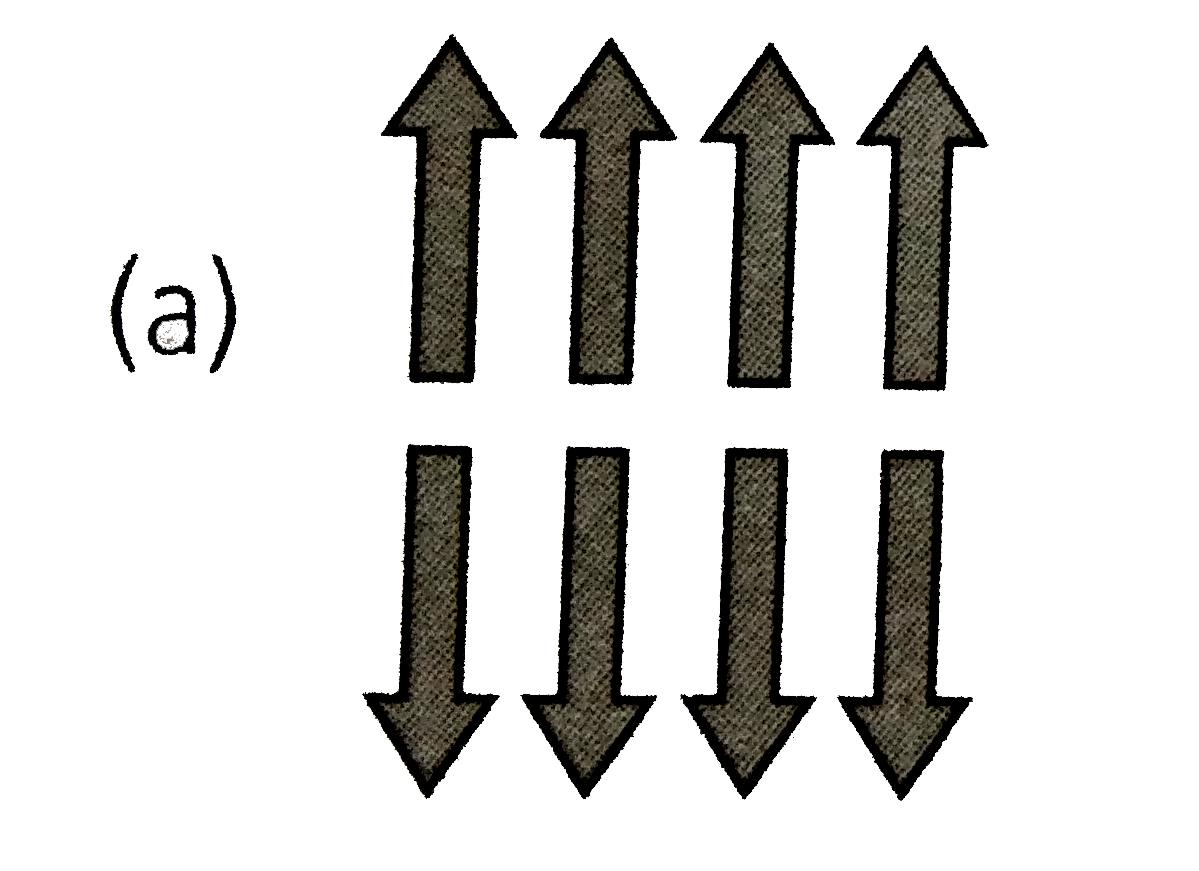 B
B C
C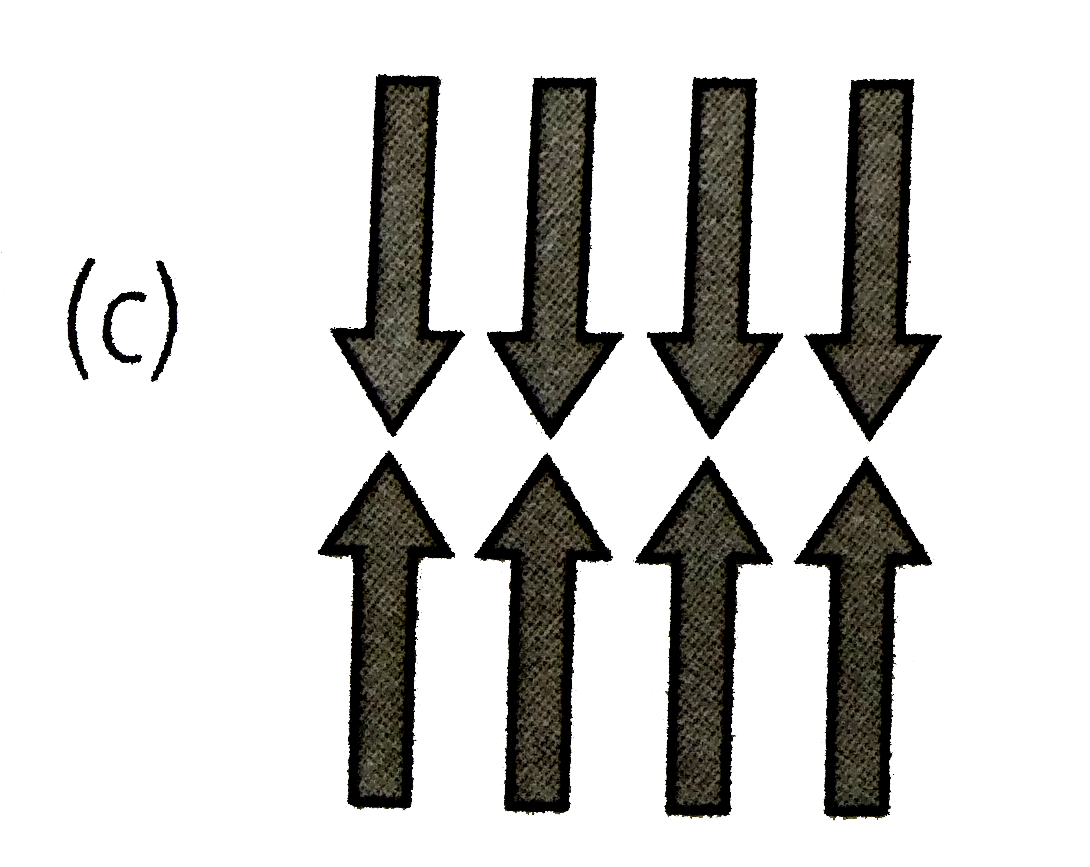 D
D
Germs make us sick.It's an elementory truth that we each to our children. It's why we wash our hands before eating. It's why we pasteurize our milk and refrigerate our food. When they do make us sick, oour ability to safely exterminate them is nothing short of a modern mriracle. Beginning with penicillin in 1928, antibiotics foreever transformed the way we both treat and prevent infectious diseases. Today, moreover,one can stroll down any cleaning supply aisle at a supermarket, and discover a bevy of products boasting of their broad-spectrum antimicrobial activity.For better or for worse, our culture of "germophobia" was hard-won by its proponents. From the time it was first proposed in the 16th century, the germ theory of diseases faced three hundreds years' worth of influential nayasayers and it was not until the late 1800's that the theory began to gain the pervasive public vindication it enjoys todays. However, an emerging body of research indicates that we have been perhaps overzealous in our crusade to eradicate the germs that live within us. The "human microbiome" refers collectively to the microscopic organisms that application of dynamic ecological theories to this biome represents a rapidly expanding feild of study. Comprised of fungi, viruses, archaea and perhaps 1000 species of bacteria, the population of this microbiome is thought to outnumber our own cells, a significant portion of these organisms play crucial roles in our metabolic and immunological processes. For example, Oxalobacter formigenes, Which colonizes the colon, is primary source of the enzymes oxalyl-CoA decarboxylase, which allows us to safely eliminate dietary exalata. Without this enzyme, calcium oxalate saltts tend to accumulate in the kidney tubules and eventually precipitate as renal stones. Other colonic bacteria catalyze the reduction of bilirubin into urobilinogen: a reaction critical to our digestion of fats, and absorption of fat-soluable vitamins. Interestestinal tracts also directly synthesize sevweral vitamins in excess of their own metabolic needs, and as a result, represent an important source of both vitamin B12, which is necessary for the production of new red blood cells and vitamin k, which is a cofactor in the synthesis of several blood clooting factors. The benefits we gain from a balanced, thriving microbiome are diverse and we are only just beginning to appriciate their true complexity, through perhaps no signal function it serves is more significant than its role in regulating our immune systems. There are numerous mechanisms by which the microbiome helps protect us from diseases. Some speices, for instance, secrete special proteins, known as "bacteriocins" that are directly toxic to pathogenic bacteria, but harmless to our own cells. One particularly impressive members of the microbiome, Lactobacillus, produces a powerful bacteriocin called reuterin, as well as lactic acid and hydrogen peroxide, which inhibits the growth of disease- causing organisms by lowering local pH and damaging lipids membranes repectively. Of no less importance, there are a number of more indirect, ecological-oriented ways in which the microbiome confers protection to its host. abundant colonization of our bodies by benign microorganisms, for example, inhibits the overgrowth of more dangerous ones through the sheer depletion of microbial nutrients. This notion of ecological balance has been of particular interest to scientists studying the microbiome, as it hinges upon both the variable diversity of species that colonizes an individual, as well as fators that affect the dynamism of a microbiotic population. Age, geography, diet, and stress have all been implicated in influencing both the composition and balance of the microbiome. None, however, has been shown to have so drastic an affect as the use of antibiotics, wich unlike bacteriocins, trend to be just as deadly to disease-causing bacteria as they are to those that colonize us naturally. Admittedly, antibiotics save lives. Yet our decision to use them must be weighed carefully, as artificially as, artifiicially upsetting the ecological balance of our bodies can have direconsequences. These is perhaps no greater example of this than Clostridium difficile, a colonic bacterium that is both highly resistant to antibiotics and an increasing cause of hospital-acquired disease. When properly counterbalanced by its neighbouring species, C. diffcile is harmless to humans. However, following the administration of antibiotics and the elimination of its ecological competitors. C. diff prolifernation procedds unchecked, resulting in a frequently fatal infection for which very few effective treatment exist.
Q. As used in line 1, the word "elementary" most closely meansAscholasticBmedicalChealthyDfundamental
Human eye contains cone cells which respond to red green and blue light. When all of these cones Are stimulated equally then a sensation of ___ light is produced Select the option which fills the blank correctly.
View SolutionIn brief state what happens when
(a) Dry apricots are left for sometime in pure water and later transferred to sugar solution?
(b) A red blood cell is kept in concentrated saline solution?
(c) The plasma-membrane of a cell breaks down?
(d) When Rheo leaves are boiled in water first and then a drop of sugar syrup is put on it, osmosis does not occurs, due to the death of the cells of the leaf. This shown that selective permeability is property of living plasma membrane.
(e) Golgi complex helps in the package, storage and transfer of proteins synthesised by ribosomes. Thus, when ribosomes are removed the cell will not function properly.
View SolutionWhich is false?
(a) Pro-ubisch bodies when coated with sporopollenin become ubisch bodies
(b) The nucleus of tapetal cell divides by mitosis and endomitosis
(c) The fibrous thickening of endothecium is made of suberin
(d) None of the above
View SolutionA solution may contain any of the following ions: Fe2+,Ni2+,Cr3+,Zn2+,Mn2+ Based on the experiment and result therein , which of the ions would be present? Indicate any wrong infornation if any…..
a. The original solution is treated with with (NH4),S(a subestitate is obtain
b. The ppt for (a) dissolves in regain
c. The fitrate after sepration ppt in (a) is treated with NaOH and H2O2 A dark ppt , is separate filtrate is colourless.
e. The solution from (d) is turned with aq NH3 A dark ppt forms
f. The ppt from (e) is solution in HCI (aq) and solution develops an latense red colour when treated with SCNΘ (aq)
View SolutionGerms make us sick.It's an elementory truth that we each to our children. It's why we wash our hands before eating. It's why we pasteurize our milk and refrigerate our food. When they do make us sick, oour ability to safely exterminate them is nothing short of a modern mriracle. Beginning with penicillin in 1928, antibiotics foreever transformed the way we both treat and prevent infectious diseases. Today, moreover,one can stroll down any cleaning supply aisle at a supermarket, and discover a bevy of products boasting of their broad-spectrum antimicrobial activity.For better or for worse, our culture of "germophobia" was hard-won by its proponents. From the time it was first proposed in the 16th century, the germ theory of diseases faced three hundreds years' worth of influential nayasayers and it was not until the late 1800's that the theory began to gain the pervasive public vindication it enjoys todays. However, an emerging body of research indicates that we have been perhaps overzealous in our crusade to eradicate the germs that live within us. The "human microbiome" refers collectively to the microscopic organisms that application of dynamic ecological theories to this biome represents a rapidly expanding feild of study. Comprised of fungi, viruses, archaea and perhaps 1000 species of bacteria, the population of this microbiome is thought to outnumber our own cells, a significant portion of these organisms play crucial roles in our metabolic and immunological processes. For example, Oxalobacter formigenes, Which colonizes the colon, is primary source of the enzymes oxalyl-CoA decarboxylase, which allows us to safely eliminate dietary exalata. Without this enzyme, calcium oxalate saltts tend to accumulate in the kidney tubules and eventually precipitate as renal stones. Other colonic bacteria catalyze the reduction of bilirubin into urobilinogen: a reaction critical to our digestion of fats, and absorption of fat-soluable vitamins. Interestestinal tracts also directly synthesize sevweral vitamins in excess of their own metabolic needs, and as a result, represent an important source of both vitamin B12, which is necessary for the production of new red blood cells and vitamin k, which is a cofactor in the synthesis of several blood clooting factors. The benefits we gain from a balanced, thriving microbiome are diverse and we are only just beginning to appriciate their true complexity, through perhaps no signal function it serves is more significant than its role in regulating our immune systems. There are numerous mechanisms by which the microbiome helps protect us from diseases. Some speices, for instance, secrete special proteins, known as "bacteriocins" that are directly toxic to pathogenic bacteria, but harmless to our own cells. One particularly impressive members of the microbiome, Lactobacillus, produces a powerful bacteriocin called reuterin, as well as lactic acid and hydrogen peroxide, which inhibits the growth of disease- causing organisms by lowering local pH and damaging lipids membranes repectively. Of no less importance, there are a number of more indirect, ecological-oriented ways in which the microbiome confers protection to its host. abundant colonization of our bodies by benign microorganisms, for example, inhibits the overgrowth of more dangerous ones through the sheer depletion of microbial nutrients. This notion of ecological balance has been of particular interest to scientists studying the microbiome, as it hinges upon both the variable diversity of species that colonizes an individual, as well as fators that affect the dynamism of a microbiotic population. Age, geography, diet, and stress have all been implicated in influencing both the composition and balance of the microbiome. None, however, has been shown to have so drastic an affect as the use of antibiotics, wich unlike bacteriocins, trend to be just as deadly to disease-causing bacteria as they are to those that colonize us naturally. Admittedly, antibiotics save lives. Yet our decision to use them must be weighed carefully, as artificially as, artifiicially upsetting the ecological balance of our bodies can have direconsequences. These is perhaps no greater example of this than Clostridium difficile, a colonic bacterium that is both highly resistant to antibiotics and an increasing cause of hospital-acquired disease. When properly counterbalanced by its neighbouring species, C. diffcile is harmless to humans. However, following the administration of antibiotics and the elimination of its ecological competitors. C. diff prolifernation procedds unchecked, resulting in a frequently fatal infection for which very few effective treatment exist.
Q. As used in line 87, the word"hinges" most closely means
View Solution
